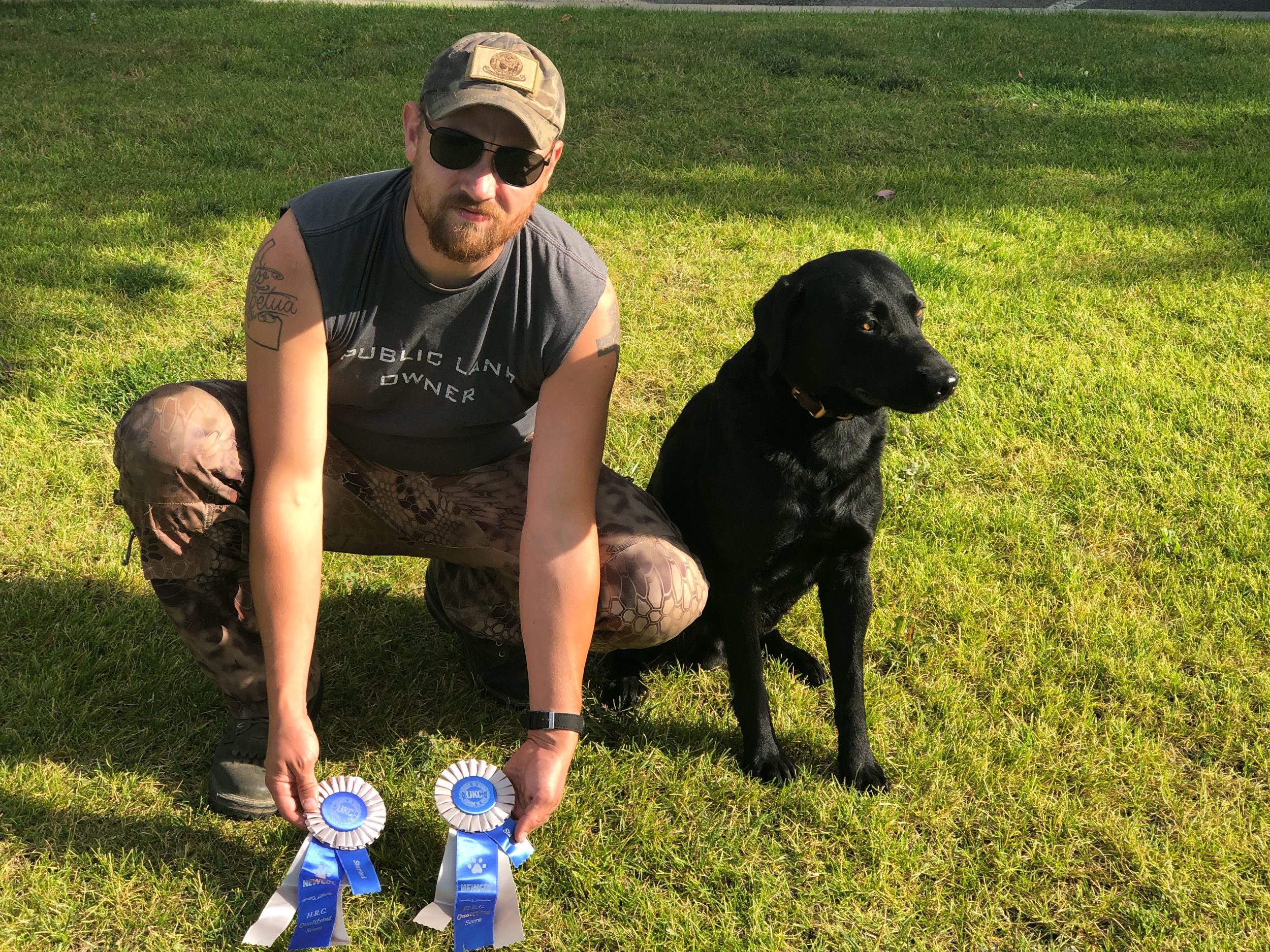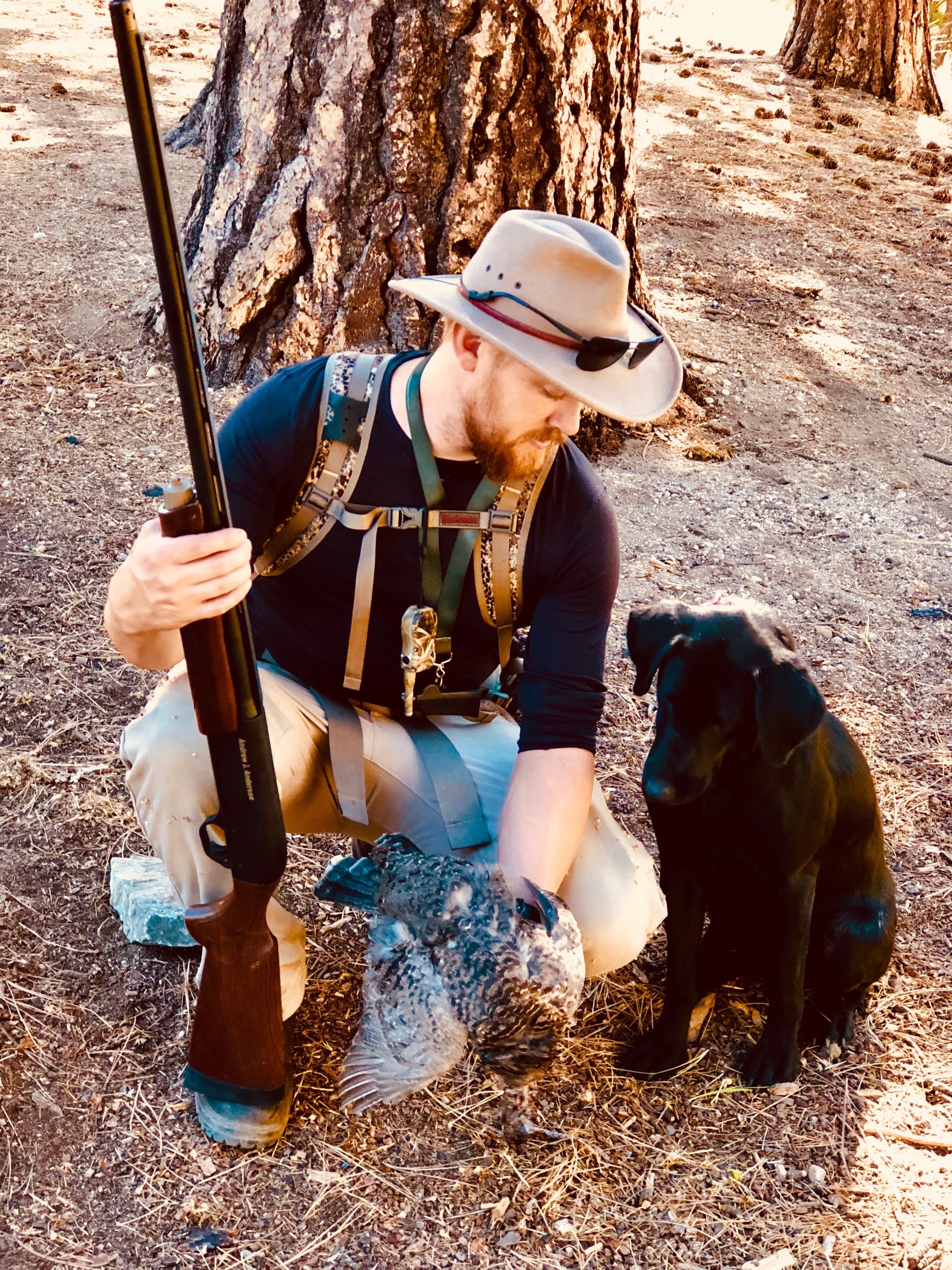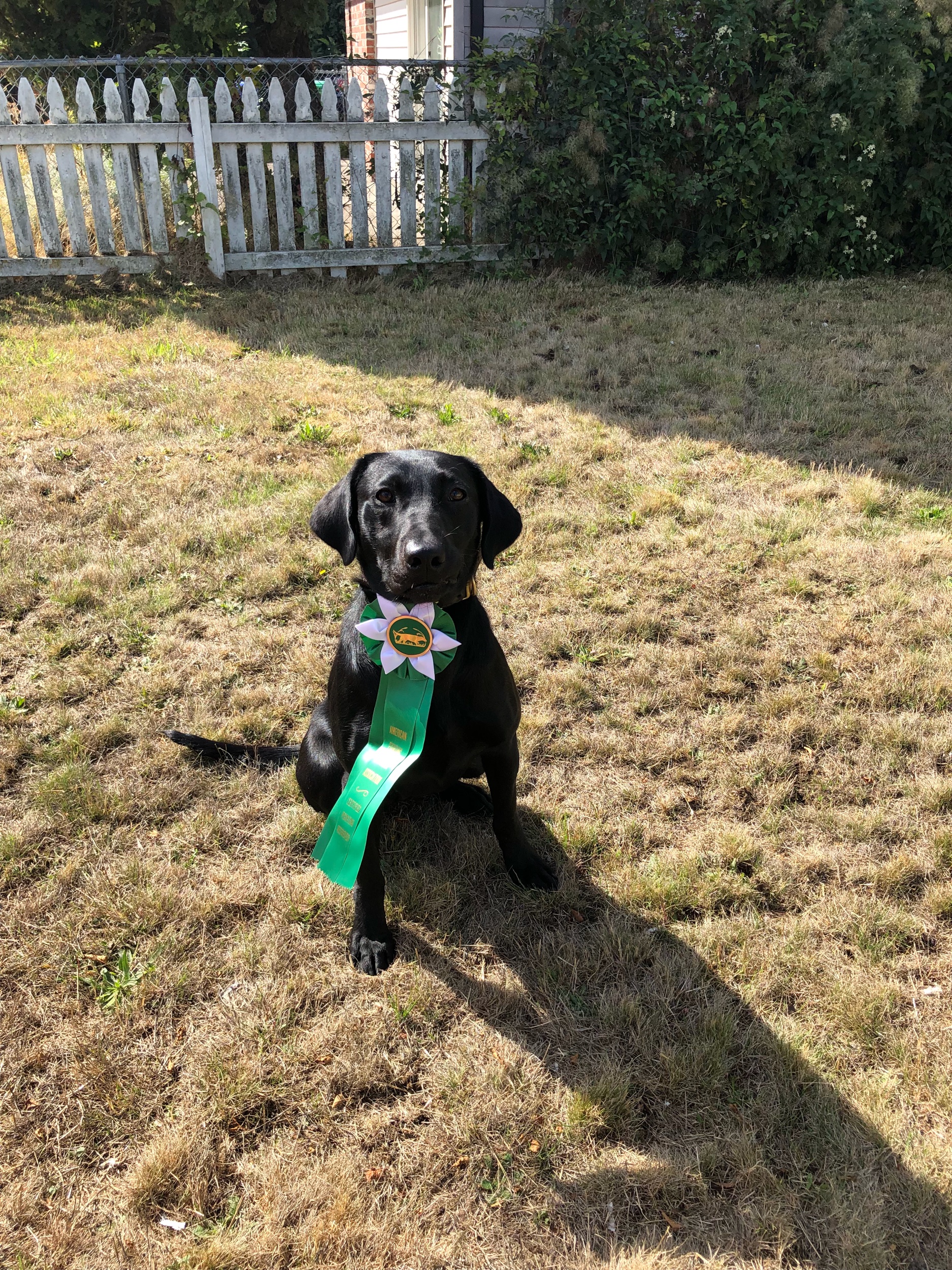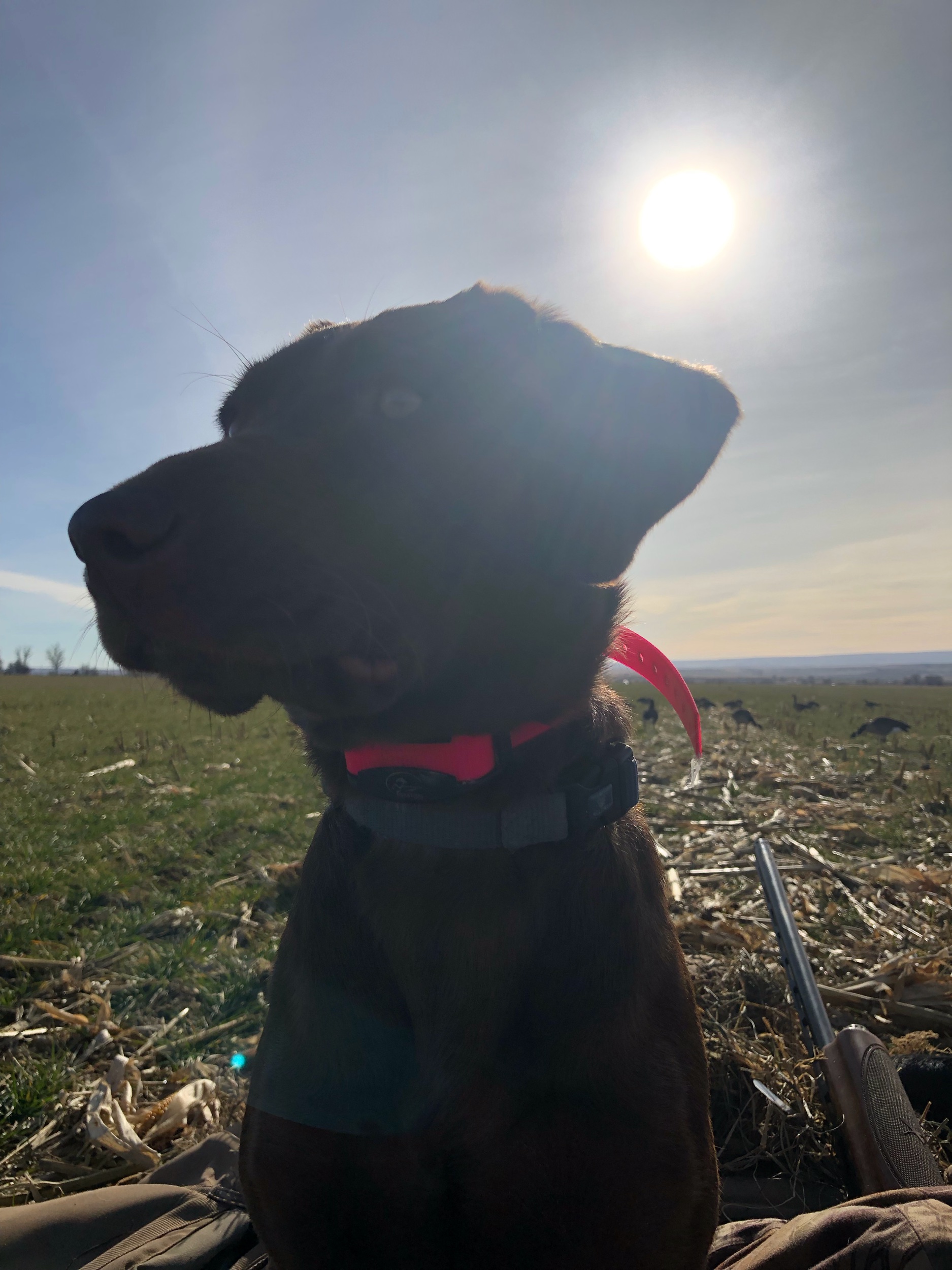Reli’s Roughriding Tanker - Tanker is a large part of why I wanted to start a breeding program, when you work closely with a good dog it is hard to not have a desire to pass on the talent. I know, I know - “everyone has the best dog”... That old cliche aside, he has been an outstanding waterfowl dog and hunting companion. This season Tanker will be splitting his time between working with me on some guided hunts and working as my personal hunting dog. Tanker has a few HRC passes under his belt and we are hoping to earn him his Seasoned title this year. He has excellent cold water tolerance, impressive prey drive and is excellent in the home and around kids.
Tanker with his first limit of mallards Christmas Eve 2014, Snake River, Idaho
The winter of 2016/2017 was a pretty harsh one here in Idaho, but that didn’t do much to dissuade Tanker from doing what he loves!
I have to be honest, I don’t love hunt tests, but we are working on them a bit - see… ribbons! 😳
CVKs Rookies Rockin Tia - Tia holds a Certified Pointing Retriever title from the American Pointing Labrador Association. She has a strong, stylish point, is eager to please and simply loves people. Her work in the upland is a blast to watch and hunt behind! We are currently training to get her ready to earn the Advanced Pointing Retriever title. On top of training and testing she will be working with Tanker and I this season on some guided hunts and as well as for personal hunting. We are hoping for her to have her first litter in the spring of 2020.
Tia after some grouse hunting in Idaho.
Tia looking proud after earning her CPR
Tia and Tanker after a training session in Western Washington.
Isaac’s Snake River Twist - Twist is a pup who is working very hard at earning her place in the pack. She has amazing drive and persistence and will be beginning her journey in the hunt test world this season. That said she has already begun to prove herself in her more important role, in the field as a hunting companion. We are looking forward to continuing her training and everything she is going to bring to the table!
Snake River Baptism - Twist’s first Retrieve on a mallard.
Twist spending some time in the goose blind with me.
Slow days mean jump shooting wigeon.
















